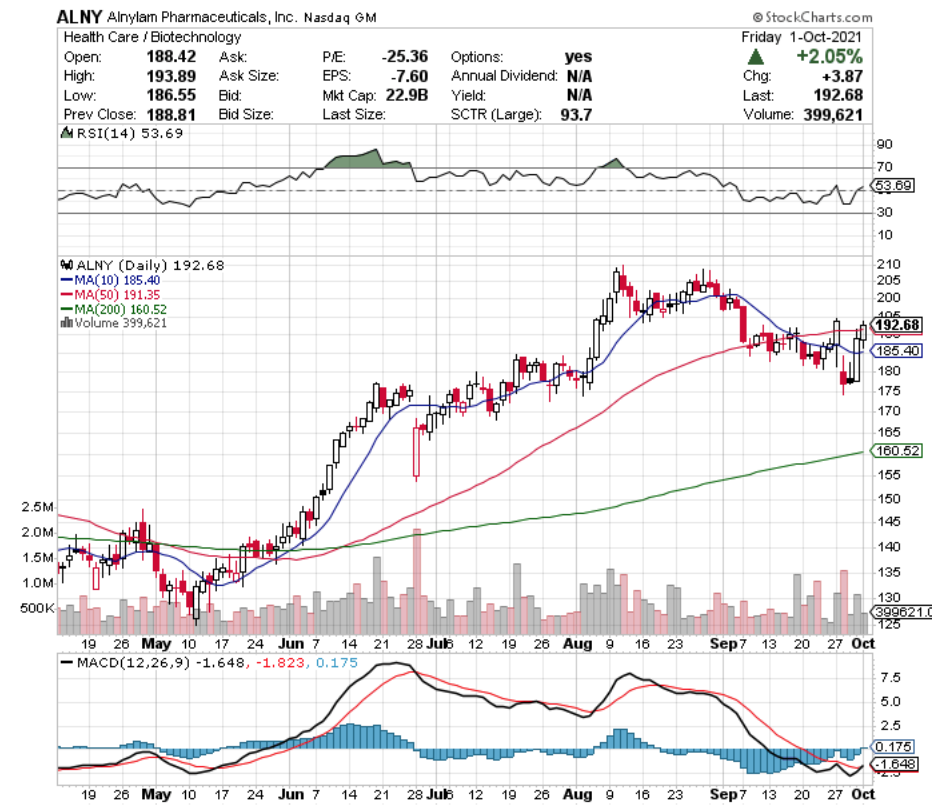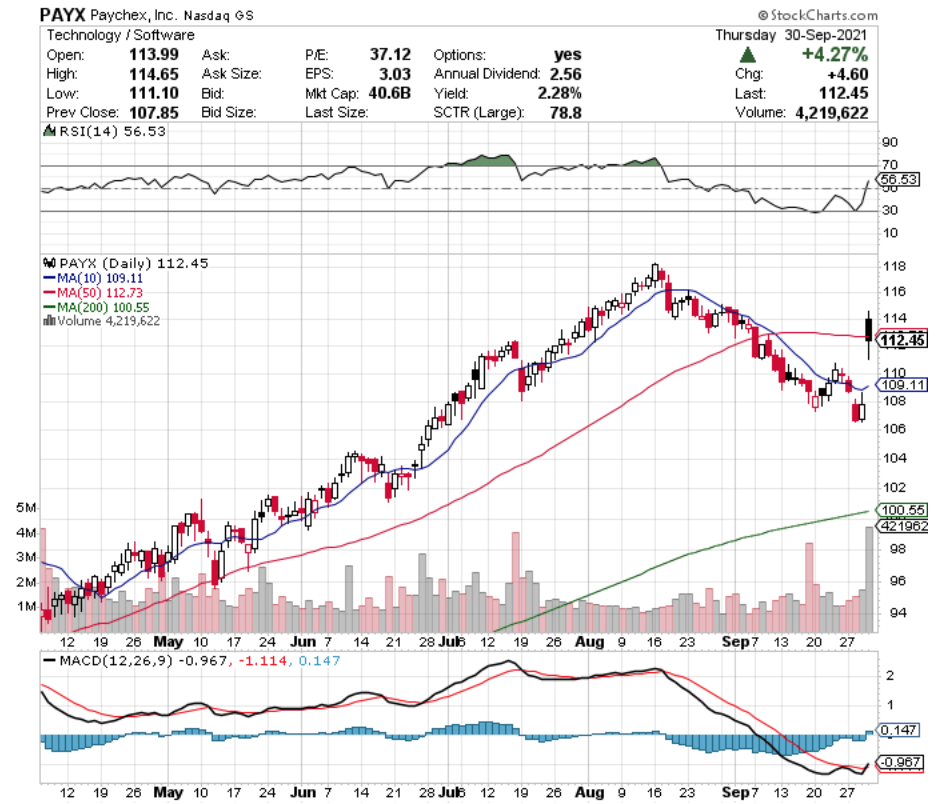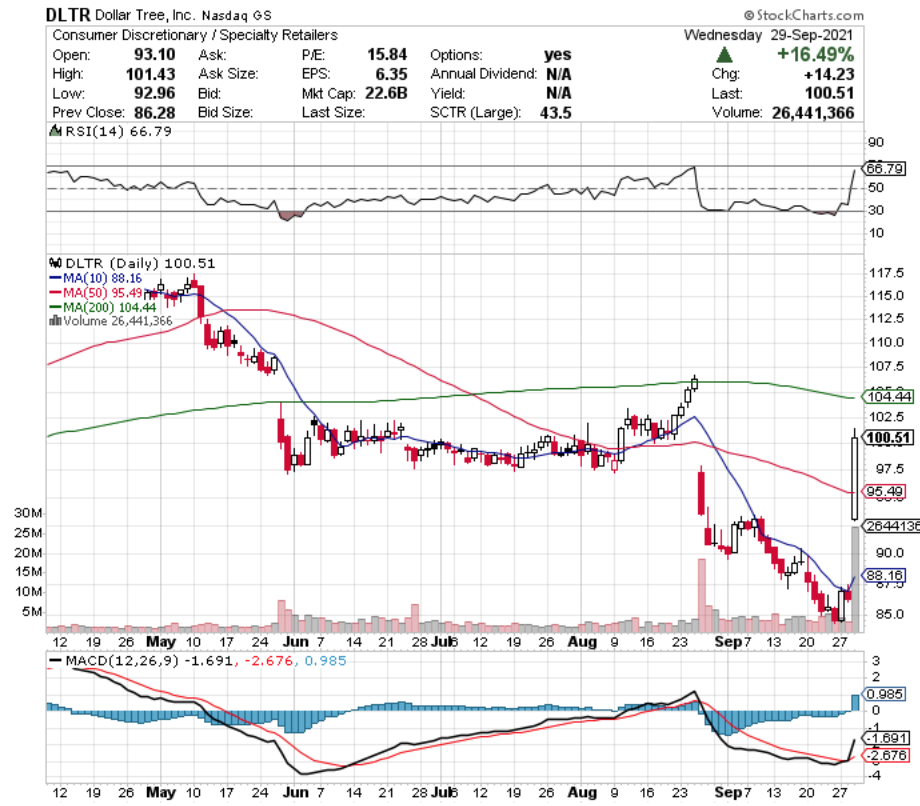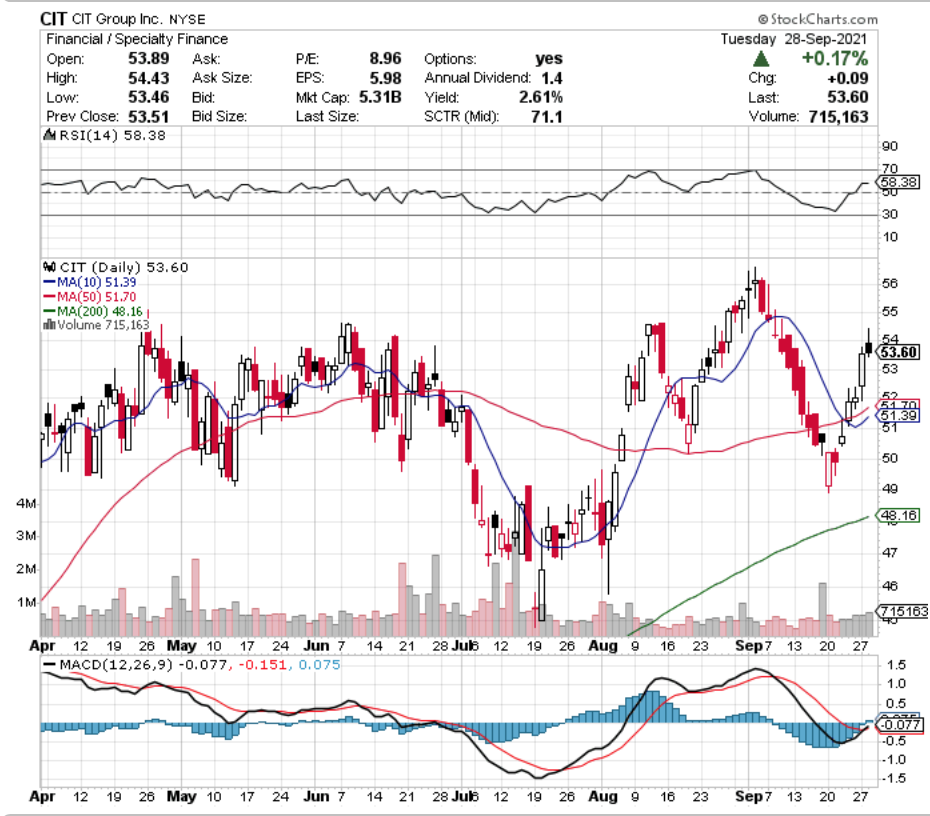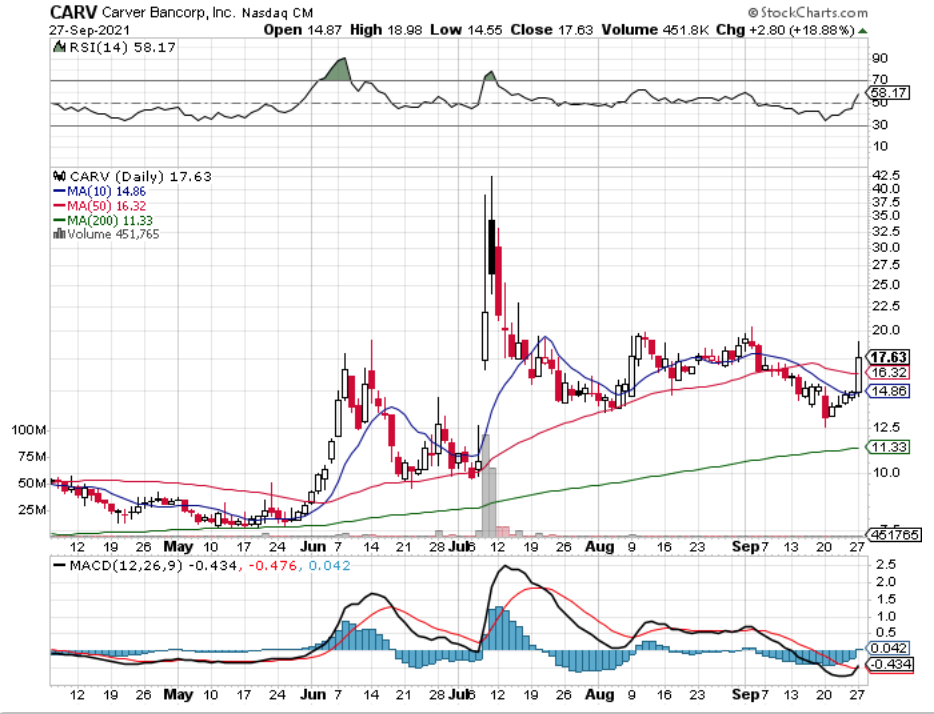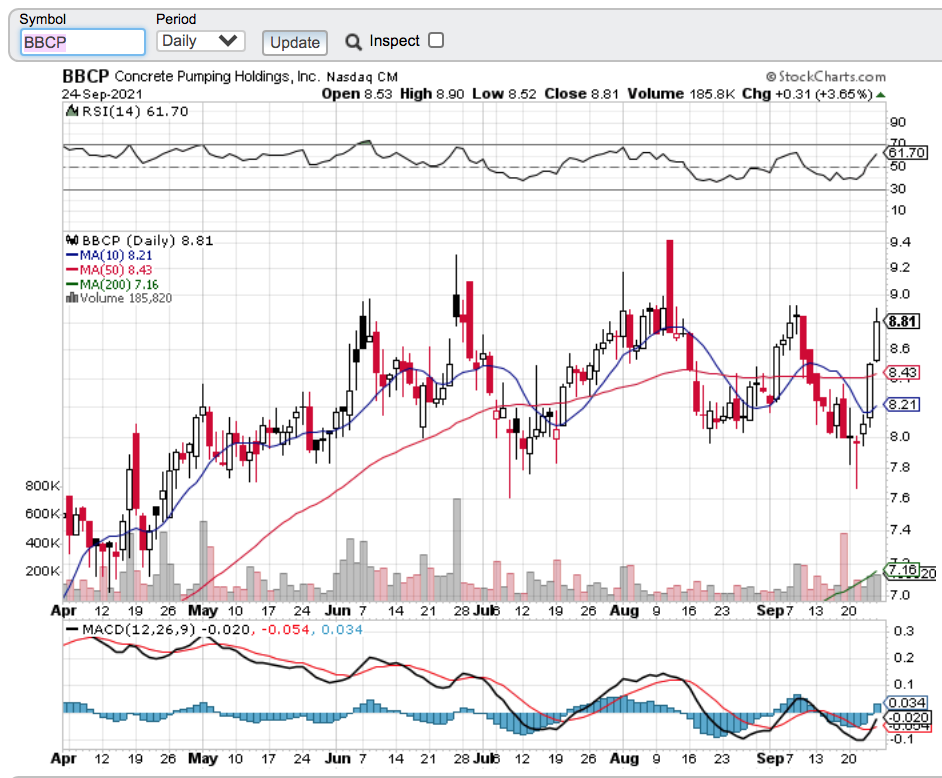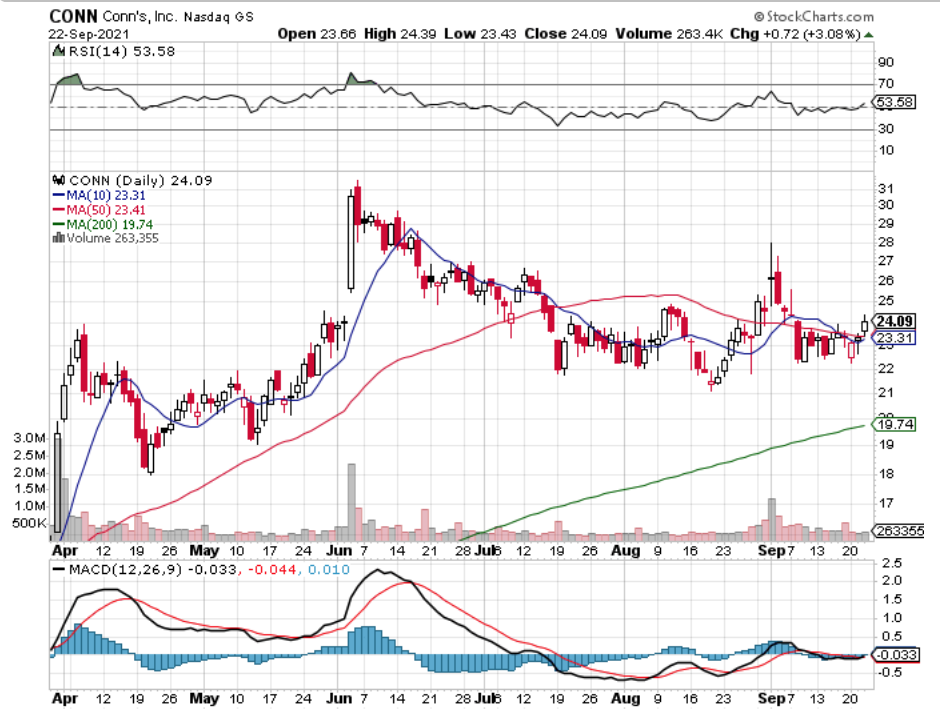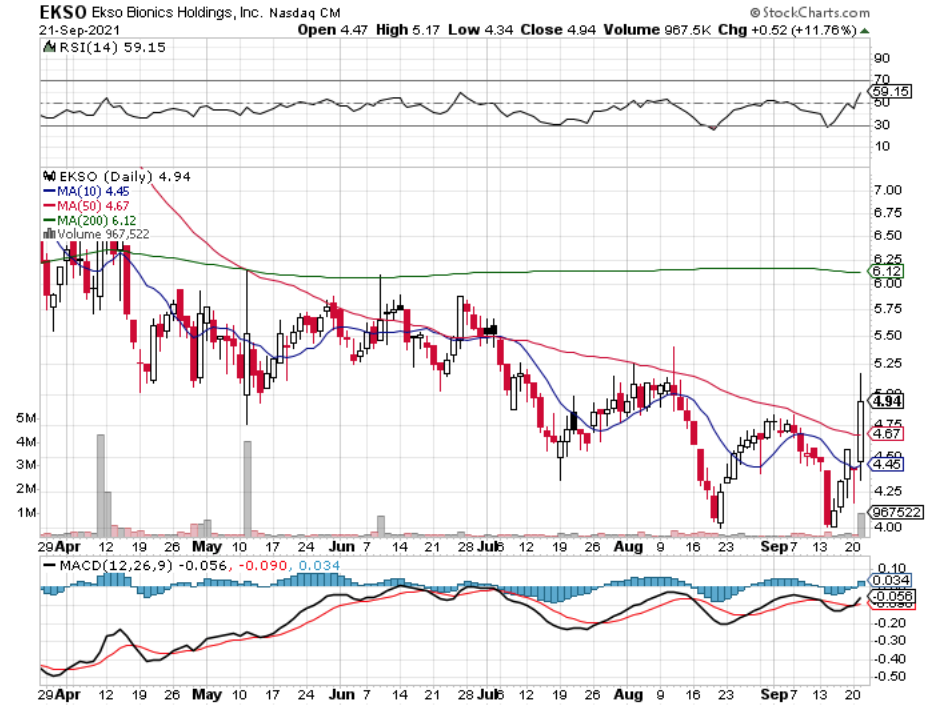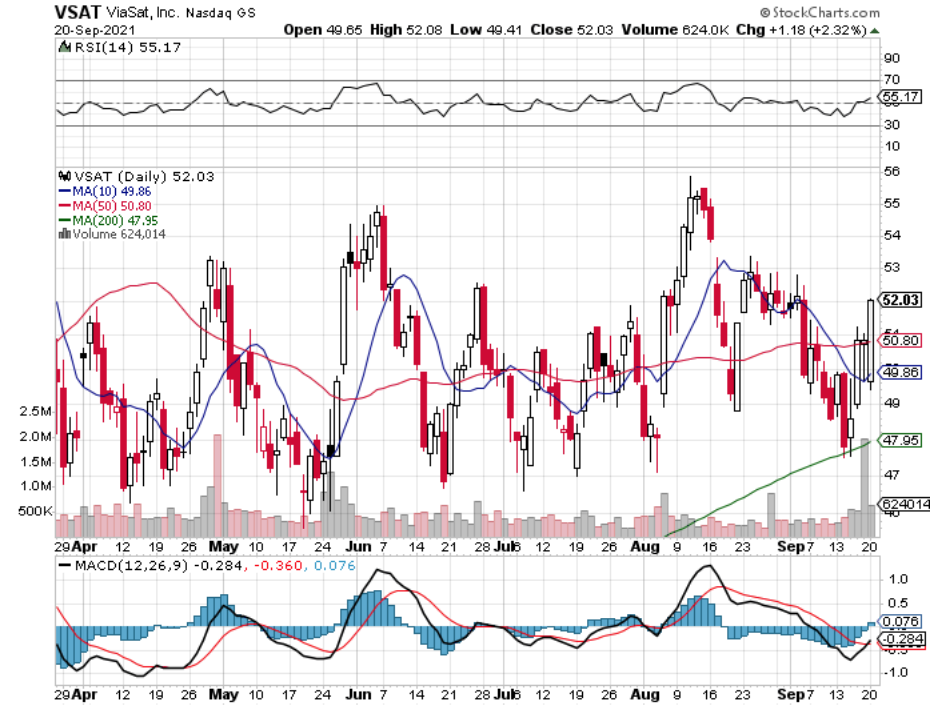Green Plains Inc. stock trades under the ticker GPRE & is showing signs of technical strength that traders & investors may be interested in.
GPRE is a member of the specialty chemicals industry, and closed at $34.09/share on 10/4/2021.
Breaking Down Green Plains Inc. GPRE Stock’s Technicals
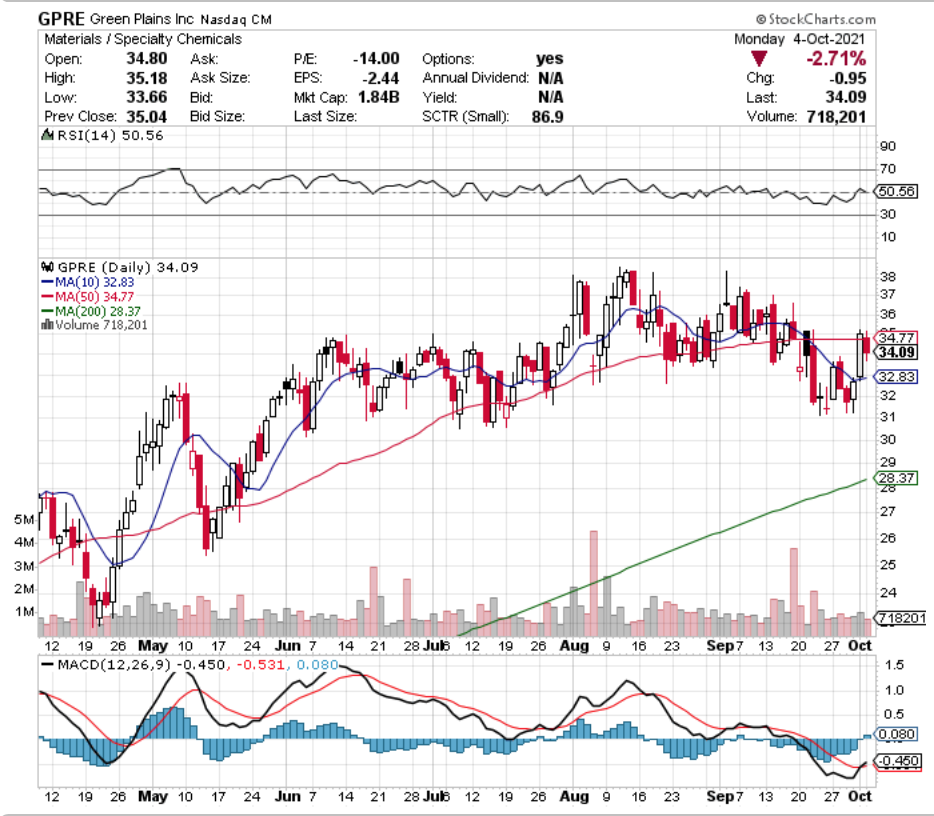
GPRE Stock Price: $34.09
10 Day Moving-Average: $32.83
50 Day Moving-Average: $34.77
200 Day Moving-Average: $28.37
RSI: 50.6
MACD: -0.45
Despite a ~3% drop in price on a volatile trading day yesterday, GPRE still has many bullish characteristics in the near-term.
GPRE’s share price has broken the 50 Day Moving-Average bullishly & still has momentum to do so again, with a ~6% difference between the 50 & 10 Day MA.
With a near even RSI there is still more room to run as the share price is neither overbought nor oversold, and yesterday they completed a bullish MACD crossover.
Green Plains Inc. GPRE Stock As A Long-Term Investment
Investors may find Green Plains Inc.’s stock to be a good fit, especially with 86.7% Quarterly Revenue Growth (Y-o-Y).
GRPE does not have a trailing P/E, which may deter some investors, alongside their rich P/B of 2.07.
GPRE has Total Cash (mrq) of $496.9M & Total Debt (mrq) of $783.5M, and a Market Cap of $1.79B.
Green Plains Inc.’s stock does not offer a dividend to investors.
Green Plains Inc. GPRE Stock As A Short-Term Trade Using Options
Traders can take advantage of GPRE’s recent momentum by using options.
I am looking at the 10/15 expiration calls, with the $33 & $34 strike prices in the event that more volatility hits the market in the coming weeks.
I am also looking at the $35 & $36 puts with the same expiration date.
Tying It All Together
Overall, GPRE stock has many advantages that traders & investors may be interested in.
Their recent technical performance is something that short-term oriented traders should find appealing.
Long-term oriented investors may like their most recent quarterly revenue growth, as well as the exposure to specialty chemical stocks.
Regardless of your timeframe & trading style, Green Plains Inc. stock is worth taking a closer look at.
*** I DO NOT OWN SHARES OF GPRE STOCK ***
